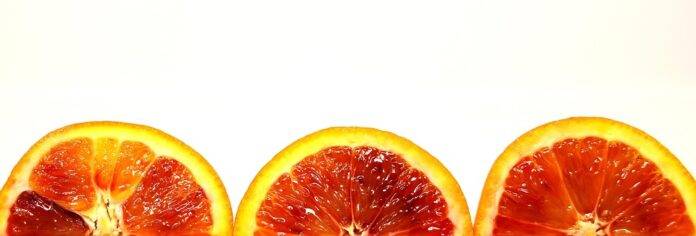Introduction
Drought conditions pose significant challenges for agriculture worldwide, and citrus farming is no exception. With climate change leading to more frequent and severe droughts, the need for drought-resistant crops has become increasingly urgent. This report focuses on the top 10 drought-resistant orange varieties, highlighting their unique characteristics, cultivation requirements, and financial viability. By understanding these varieties, farmers can make informed decisions that promote sustainability while ensuring productive yields.
The Importance of Drought Resistance in Oranges
Drought-resistant orange varieties are essential for several reasons:
1. **Sustainability**: As water resources become scarcer, growing drought-resistant crops can conserve water and reduce dependency on irrigation.
2. **Economic Stability**: Drought-resistant varieties can lead to more consistent yields, thus providing farmers with a stable income even in adverse weather conditions.
3. **Soil Health**: These varieties are often better at maintaining soil moisture and health, which contributes to overall ecosystem sustainability.
Top 10 Drought-Resistant Orange Varieties
1. Valencia Orange
The Valencia orange is one of the most popular varieties due to its excellent juice quality and adaptability to various climates. Known for its high sugar content and low acidity, it thrives in warmer regions with less water.
– **Yield**: Approximately 200-300 boxes per acre.
– **Cultivation**: Requires well-drained soils and benefits from deep root systems that access moisture.
2. Navel Orange
Navel oranges are renowned for their sweet flavor and easy-to-peel skins. They perform well under drought conditions, particularly when established.
– **Yield**: Average of 250-350 boxes per acre.
– **Cultivation**: Prefers deep, sandy loam soils and can tolerate dry periods after establishment.
3. Blood Orange
Blood oranges are distinctive for their deep red flesh, which is a result of anthocyanins. This variety is not only drought-resistant but also highly sought after for its unique flavor profile.
– **Yield**: About 150-200 boxes per acre.
– **Cultivation**: Thrives in Mediterranean climates and requires minimal irrigation once established.
4. Cara Cara Orange
Cara Cara oranges are a type of navel orange with pinkish-red flesh. They are known for their sweetness and low acidity. This variety is resilient to dry conditions.
– **Yield**: Approximately 200-300 boxes per acre.
– **Cultivation**: Prefers well-drained soils and can withstand periods of low moisture.
5. Seville Orange
Seville oranges, commonly used for marmalade, have a high acidity level and are drought-tolerant. They are often grown in regions with limited water availability.
– **Yield**: About 100-200 boxes per acre.
– **Cultivation**: Grows well in poor soils and thrives with minimal irrigation.
6. Hamlin Orange
Hamlin oranges are another popular variety for juice production. They are known for their ability to thrive in less-than-ideal soil conditions and are quite drought-resistant.
– **Yield**: Around 200-250 boxes per acre.
– **Cultivation**: Requires well-drained soil and can tolerate drought after the establishment phase.
7. Moro Orange
Similar to blood oranges, Moro oranges are known for their rich flavor and color. They are also resilient in drought conditions.
– **Yield**: Approximately 150-250 boxes per acre.
– **Cultivation**: Prefers dry, well-drained soil and can withstand low moisture levels.
8. Pineapple Orange
Pineapple oranges have a unique flavor profile, combining sweetness with a hint of tartness. These oranges are particularly drought-resistant and have a robust root system.
– **Yield**: About 200-300 boxes per acre.
– **Cultivation**: Thrives in sandy soils and requires minimal irrigation once established.
9. Satsuma Orange
Satsuma oranges are a type of mandarin that is easy to peel and very sweet. They are incredibly resilient and well-suited for dry conditions.
– **Yield**: Approximately 150-200 boxes per acre.
– **Cultivation**: Prefers loose, well-drained soils and is less prone to diseases under drought conditions.
10. Valencia Late Orange
As a variant of Valencia oranges, the Valencia Late is particularly advantageous for extended harvest periods. This variety is capable of withstanding drought better than its counterparts.
– **Yield**: About 250-300 boxes per acre.
– **Cultivation**: Benefits from loamy soil and is drought-resistant after establishment.
Financial Considerations for Cultivating Drought-Resistant Oranges
Understanding the economic aspects of cultivating these varieties is crucial for farmers and investors. Below is a breakdown of financial considerations, including initial costs, maintenance, and potential revenue.
Initial Costs
The initial costs for establishing an orange grove can vary significantly based on location, land preparation, and variety selection. On average:
– **Land Preparation**: $2,000 – $5,000 per acre
– **Planting Material**: $500 – $1,500 per acre
– **Irrigation Setup**: $1,000 – $3,000 per acre
Total initial investment typically ranges from $3,500 to $9,500 per acre.
Maintenance Costs
After establishment, ongoing maintenance costs are crucial to consider. These typically include:
– **Fertilization**: $200 – $600 per acre per year
– **Pest Control**: $150 – $400 per acre per year
– **Harvesting**: $300 – $700 per acre per year
Annual maintenance costs average between $650 and $1,700 per acre.
Revenue Generation
Revenue generation is highly dependent on yield per acre and market prices. With an average yield of 200 boxes per acre and a market price of $12 per box, potential revenue can be estimated as follows:
– **Annual Revenue** = Yield per Acre x Market Price
– **Example**: 200 boxes x $12 = $2,400 per acre
With effective management and optimal growing conditions, farmers can expect to break even in 4-5 years, depending on initial investments and market conditions.
Conclusion
The cultivation of drought-resistant orange varieties is not just a strategy for survival; it is a pathway toward sustainable agriculture. Varieties such as Valencia, Navel, and Cara Cara oranges offer unique benefits in terms of yield, flavor, and resilience to dry conditions. With thoughtful financial planning and a focus on sustainable practices, farmers can achieve both economic stability and environmental stewardship.
As climate change continues to impact agricultural practices worldwide, investing in drought-resistant crops will be essential for future success. The top 10 drought-resistant orange varieties discussed in this report provide excellent options for farmers looking to adapt to changing conditions while maintaining productivity and profitability.




